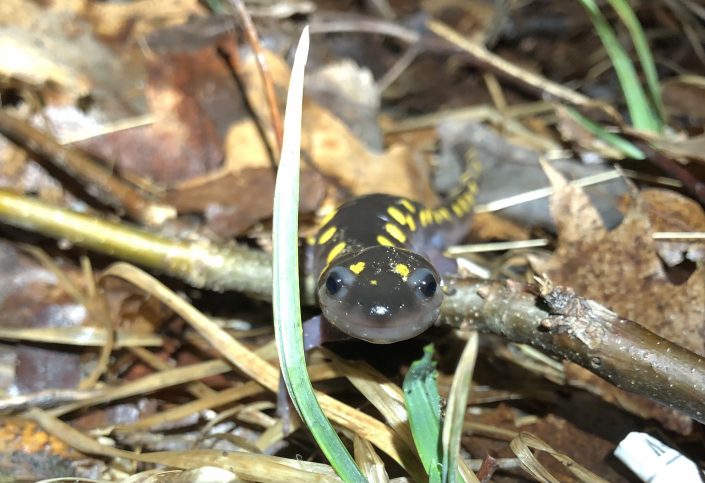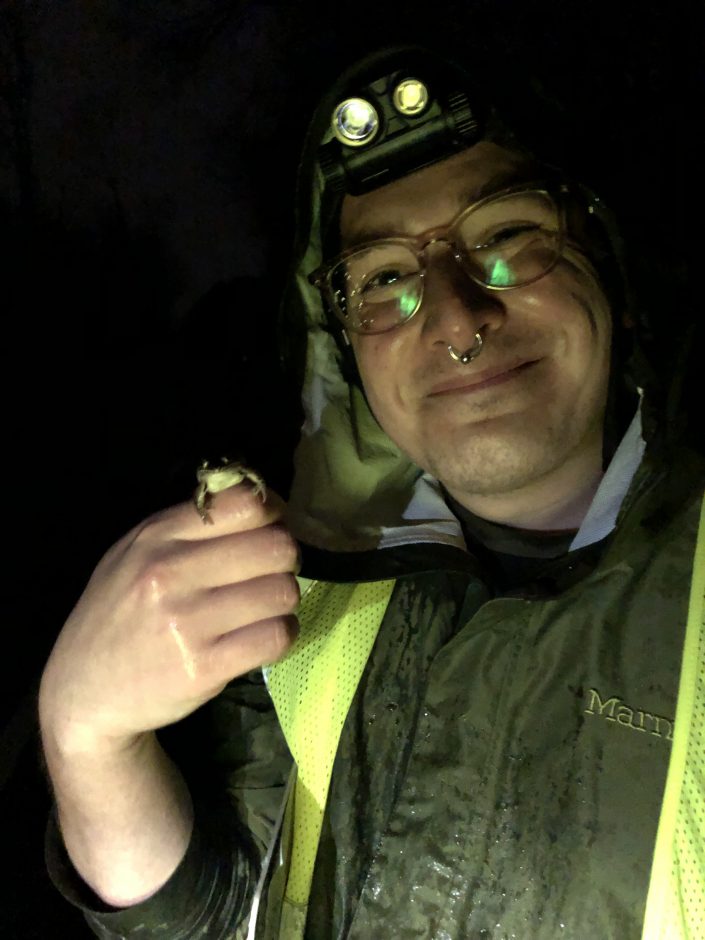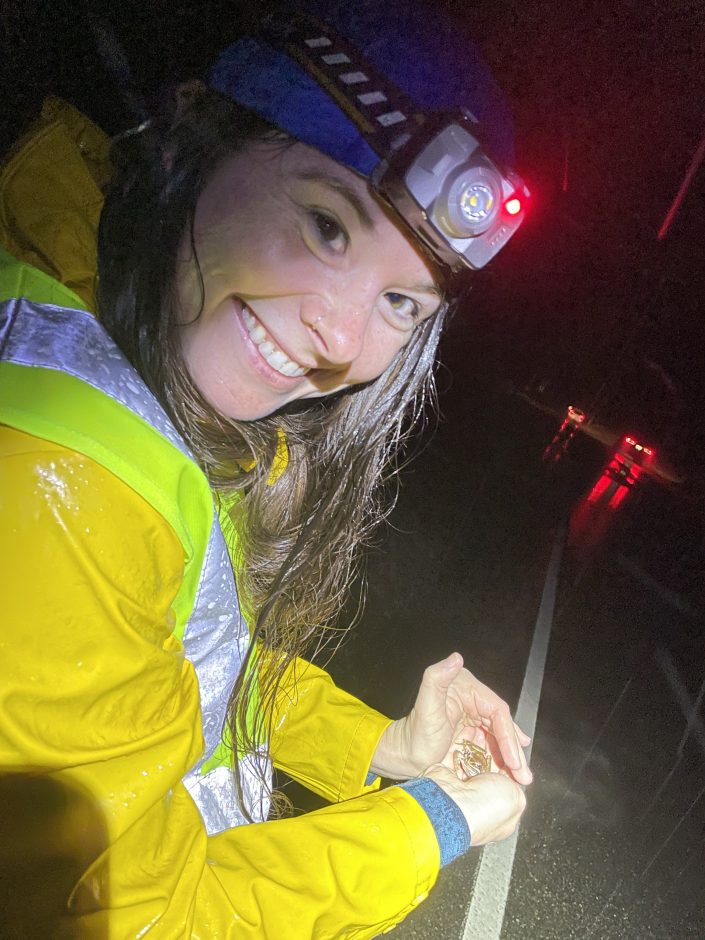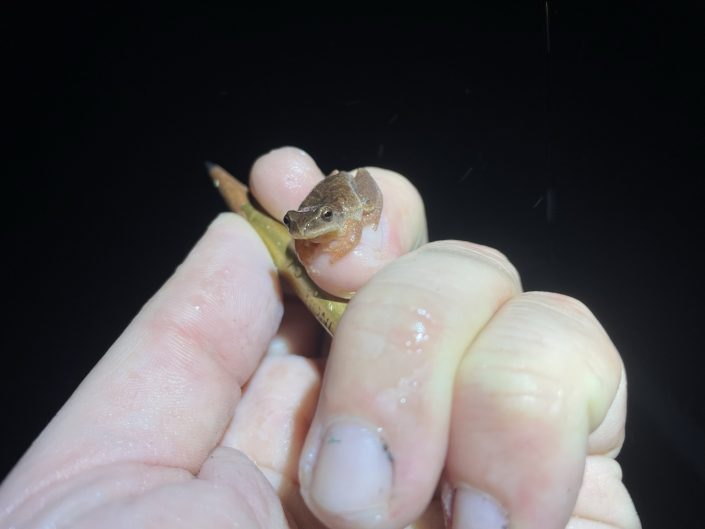2022 Amphibian Crossing Season Update
by Christine Healy, Wildlife Biologist

Rainy nights with evening temperatures edging into the mid-40s or above. Seems easy to plan for rescue nights, doesn’t it? Certainly not this year!
CWF’s Amphibian Crossing Project targets the earliest breeders in northern New Jersey, including wood frogs, spotted salamanders, and Jefferson salamanders. These vernal pool obligates must find their way from forested winter habitat to ephemeral wetlands each spring in order to successfully reproduce. Snowmelt and warm, moist air signal individuals to resume activity after a long winter’s brumation (hibernation for ectothermic “cold-blooded” animals) underground. As soon as they emerge, they head to the pools which, in our increasingly fragmented world, often means entering into a real-world game of Frogger. The stakes are incredibly high and many do not make it out alive.

To combat this problem, our team of devoted volunteers has been braving the elements for the last 20 years, ferrying slow moving amphibians across busy roadways during the earliest wave of the annual migration. Their efforts not only increase survivorship and breeding potential, but also raises awareness and contributes valuable data to justify the construction of long-term solutions. This season, 103 participants were involved in the project, working across three CWF managed roads in Byram, Liberty, and Hampton Twps. and one site in Hardwick Twp. organized by Blaine Rothauser, a senior ecologist for GZA GeoEnvironmental and Dennis Briede, stewardship manager at the Land Conservancy of New Jersey. All together, we assisted with the movement of 2,456 amphibians of 9 species, 26% of which represented species of concern.


Without a doubt, these numbers are impressive, however, I can’t help but reflect on this season with agitation. Late February and March featured dramatic temperature swings, characterized by sunny days in the 70s followed by cold snaps with snow and ice. Freezing conditions can damage amphibian egg masses and fluctuating weather may punctuate and elongate the migration, making movement difficult to predict. Lightning storms and heavy wind kept us off the roads during a few of the seasons peak nights, though based on the results of morning mortality surveys, the same cannot be said for drivers…
While amphibian rescue events do localized communities a lot of good, seasons like this one really highlight the need to remove a dependence on humans from the survival equation, especially as global climate change continues to cause deviations from “normal”. We’re anticipating the first frog/salamander-specific wildlife passage in NJ to break ground at our Byram Twp. site in the summer of 2023, after years of planning by the Endangered and Nongame Species program and many partners.
We can’t wait to see the impact this project has on the population of amphibians reliant on New Jersey’s largest vernal pool and how it inspires similar projects in the future.

Discover more from Conserve Wildlife Foundation of NJ
Subscribe to get the latest posts sent to your email.
Leave a Comment
These little creatures deserve our help! So small and vulnerable! One of these winters I want to join the team helping them across the roadways. I love my hand made (by Christine!) wooden ornaments of four of these beautiful amphibians. These are constant reminders of how fragile wildlife is in our over-crowded human world.
Thank you for doing such vital and challenging work!! More people need to be made aware of the timing and science of amphibian migration.
I hope the new project is successful and can be a model for other communities in other areas.
I desire greatly to connect with folks in NE-PA that may be interested in working towards promoting safe passageways. I live in the Poconos region and am passionately disappointed in the lack of concern and awareness regarding safe passageway for herps (and really all wildlife critters). Perhaps this begins with educating municipal leaders, or PENNDOT folks, I’m unsure. Of all the ways modern human civilization has caused detriment to wildlife survival, road crossing mortality seems to be one of the easiest that can be avoided in my opinion.
I am an active Penn State Extension Master Watershed Steward and wonder if we could leverage this educational outreach structure to begin to increase awareness and create positive changes for our precious herps. Gratitude for anyone who may connect me with resources to work towards this goal, and may reach me at rachel.posavetz@gmail
Comments are closed.